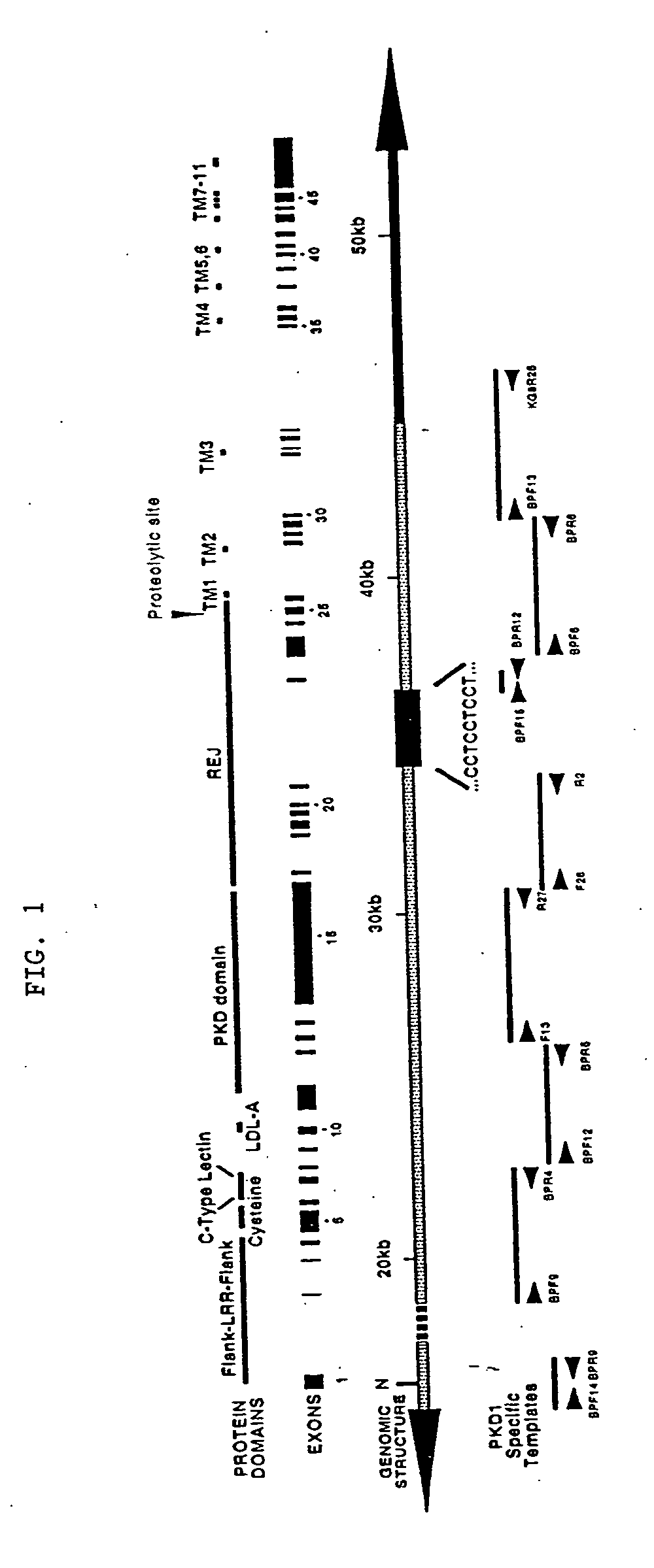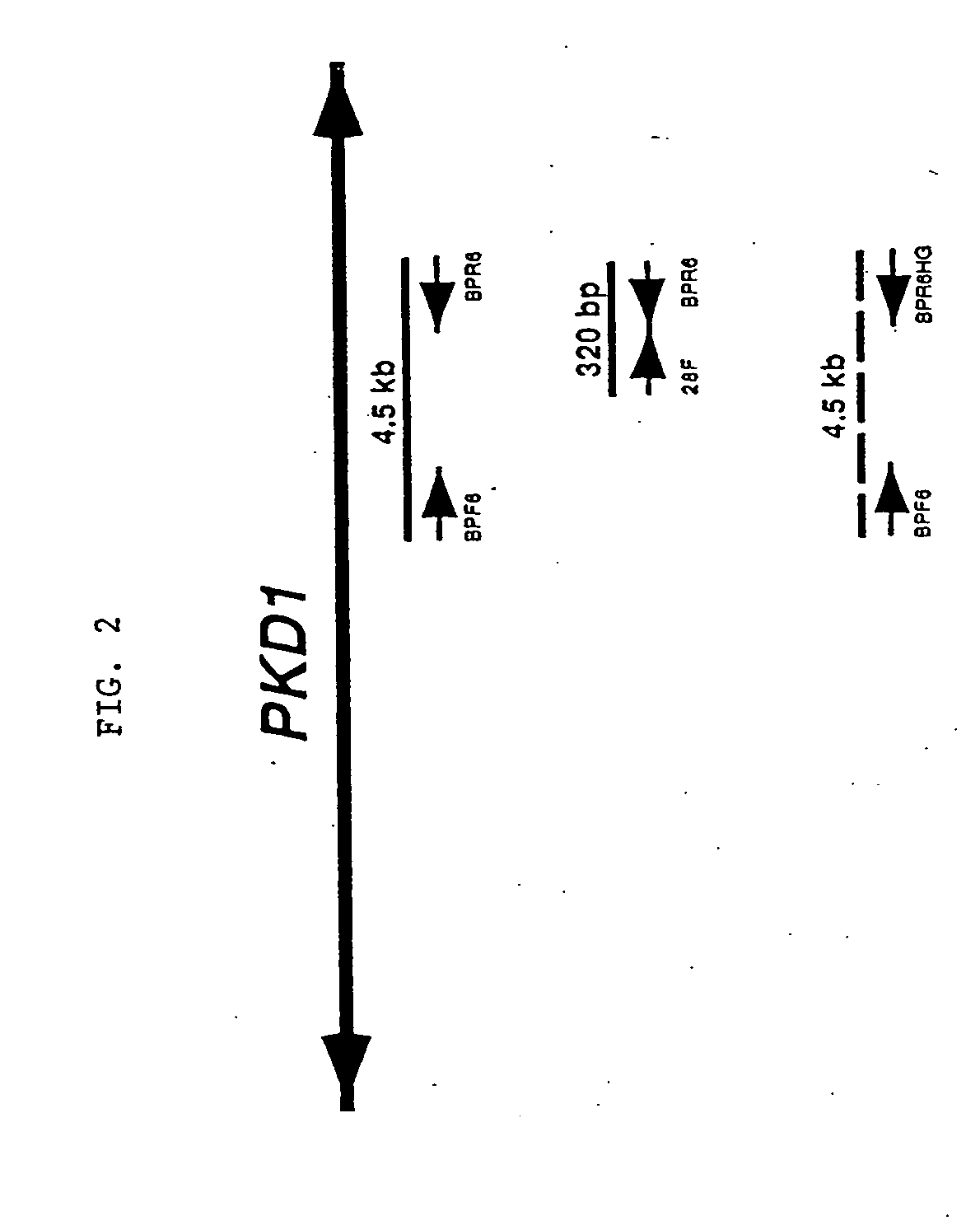Detection and treatment of polycystic kidney disease
a polycystic kidney and kidney disease technology, applied in the field of diagnosis and treatment of polycystic kidney disease, can solve the problems of pkd1 locus specific probes, grossly enlarged kidneys, and decreased renal concentration ability
- Summary
- Abstract
- Description
- Claims
- Application Information
AI Technical Summary
Benefits of technology
Problems solved by technology
Method used
Image
Examples
example 1
Long Range Specific Templates
[0225] A two-part strategy was used to generate and validate PKD1-specific primers that could be used to amplify the replicated portion of PKD1. The sequence of PKD1 (SEQ ID NO:1) was aligned with that of two homologues present in GenBank (Accession Number AC002039) and identified potential sequence differences. Candidate primers were designed such that the mismatches were positioned at or adjacent to the 3′ end of the oligonucleotide so as to maximize their specificity for PKD1.
[0226] The primers were tested for specificity using rodent-human somatic cell hybrids that either contained only human 16p13.3 and therefore, human PKD1 (145.19, a radiation hybrid), or that lacked 16p13.3 and contained only the human PKD1-homologues (N23HA). FIG. 2 presents a representative example of this approach using the primer pair, BPF6 and the PKD1-specific primer BPR6. This primer pair amplified a product of the correct length (4.5 kb) under the stated conditions only...
example 2
Mutatin Screening
[0233] The new PKD1-specific products were generated from one affected member of each of the 47 Asian families and then used as template for mutation detection of exons 1-12 and 22-34. Table 2 (above) lists the sequence and PCR condition for primer pairs that were used for nested amplification of individual exons and their adjacent intronic sequence. Overlapping pairs were designed for segments >400 base pairs in length.
[0234] A total of 13 novel variants were detected by SSCA using the conditions described above. Two are highly likely to be pathogenic mutations, four are predicted to encode missense substitutions not found in normals and seven are normal variants (see Table 3).
[0235] The first pathogenic mutation is a G to A transition at position 9213 in exon 25 that is predicted to result in a nonsense codon (W3001X). Its presence was confirmed by restriction analysis using the enzyme Mae I and it was found to segregate with disease. This variant is predicted ...
PUM
| Property | Measurement | Unit |
|---|---|---|
| molecular mass | aaaaa | aaaaa |
| lengths | aaaaa | aaaaa |
| temperature | aaaaa | aaaaa |
Abstract
Description
Claims
Application Information
 Login to View More
Login to View More - R&D
- Intellectual Property
- Life Sciences
- Materials
- Tech Scout
- Unparalleled Data Quality
- Higher Quality Content
- 60% Fewer Hallucinations
Browse by: Latest US Patents, China's latest patents, Technical Efficacy Thesaurus, Application Domain, Technology Topic, Popular Technical Reports.
© 2025 PatSnap. All rights reserved.Legal|Privacy policy|Modern Slavery Act Transparency Statement|Sitemap|About US| Contact US: help@patsnap.com



